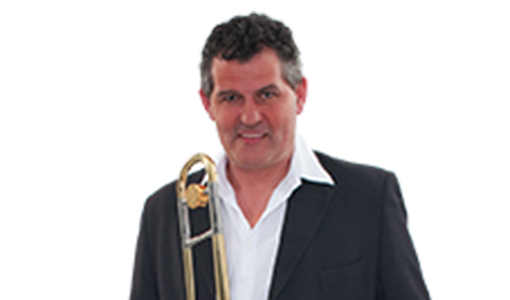Ear Catchers - Cool and Malleable Motifs for Warming Up
Preface
An ear catcher is a cool, malleable motif you can use for warming up. Like its visual equivalent, the eye-catcher, it is based on something that draws our attention. Each player has their personal way of warming up. Most start out with one note, then play slurs, staccato, scales, themes, and eventually a few “awe-inspiring riffs”. The fashion world teaches us how important variety can be. This has inspired me to start my warming-up sessions with a motif I can vary ad lib—and still achieve interesting listening results.

Natural Tone Sequence
The natural tone sequence is at the heart of all brass instruments. Each slide or valve position gives access to the same natural tone sequence. The slide or valves are used to play the notes we need. The natural tone sequence starts with the low Bb1, followed by the upper Bb, the F1 and eventually the Bb2, D2, F2 A#2 (the seventh note’s harmonics are usually a bit flat). Then come the B1 and almost all notes of the two-voiced octave (see score example §1).
Fifth and Fourth (Complementary Intervals)
The fifth and fourth are so-called complementary intervals whose sum equals one octave. The major or diatonic scale contains a total of eight notes, with semi-tone intervals between the 3rd and 4th as well as the 7th and 8th degree. Playing a fifth (i.e. 5 notes) up from the fundamental, followed by a fourth (4 notes) from there, leads you to the fundamental in the upper octave (score example 2).
From The Circle of Fifths to The Circle of Fourths
Our tonal system (equal temperament) comprises 12 semi-tone steps per octave. The circle of fifths structures parallel major and minor keys in such a way that the sequence of accidentals becomes easy to read. The circle of fifths starts at C major (A minor), i.e. a key with no accidentals. This is followed by G major/E Minor, with one sharp, etc., all the way to F# major with six sharps (#) or Gb minor with six flats (b). The “interpretation” of sharps as flats, and vice versa—referred to as “enharmonic equivalent”— means that the pitch in question can either be expressed as a sharpened or a flattened note. After the peak of six sharps and flats, the sequence loses one accidental with each subsequent step, i.e. five flats for Db major/Bb minor, all the way to C major.
When turning counter-clockwise, the sequence is: C, F, B, Eb, Ab, Db, Gb/F#, Bb, E, A, D, G, C.
This sequence is the starting point for our cool, malleable, ear-catcher motif. Each of the notes can be used as a starting point.
Starting in The Middle Register
Given that we already came across fifths and fourths in the middle register of our natural tone sequence, I suggest starting with F1 and playing the tone sequence between the C1 and the C2. Any ponderings about your daily routine need to be toned down to the bare minimum to leave room for concentrating on the first and subsequent notes you are about to play. This will ease you into getting in touch with your playing. This warm-up exercise can start from any note and should be continued until you return to the initial note. Playing this sequence allows you to visit all 12 semi-tones without getting the impression that you are playing chromatic scales (score example 3).
Ear-Catchers
If we extend the radius of our notes, we get to play a highly interesting ear-catcher. In exercise 4, you will play all notes between the F1 and the F2, from bottom to top. To create some variation, pick a different starting (and end) note for each exercise. In exercise 5, the pattern is played in a downward direction (score example 4 vs. score example 5).






